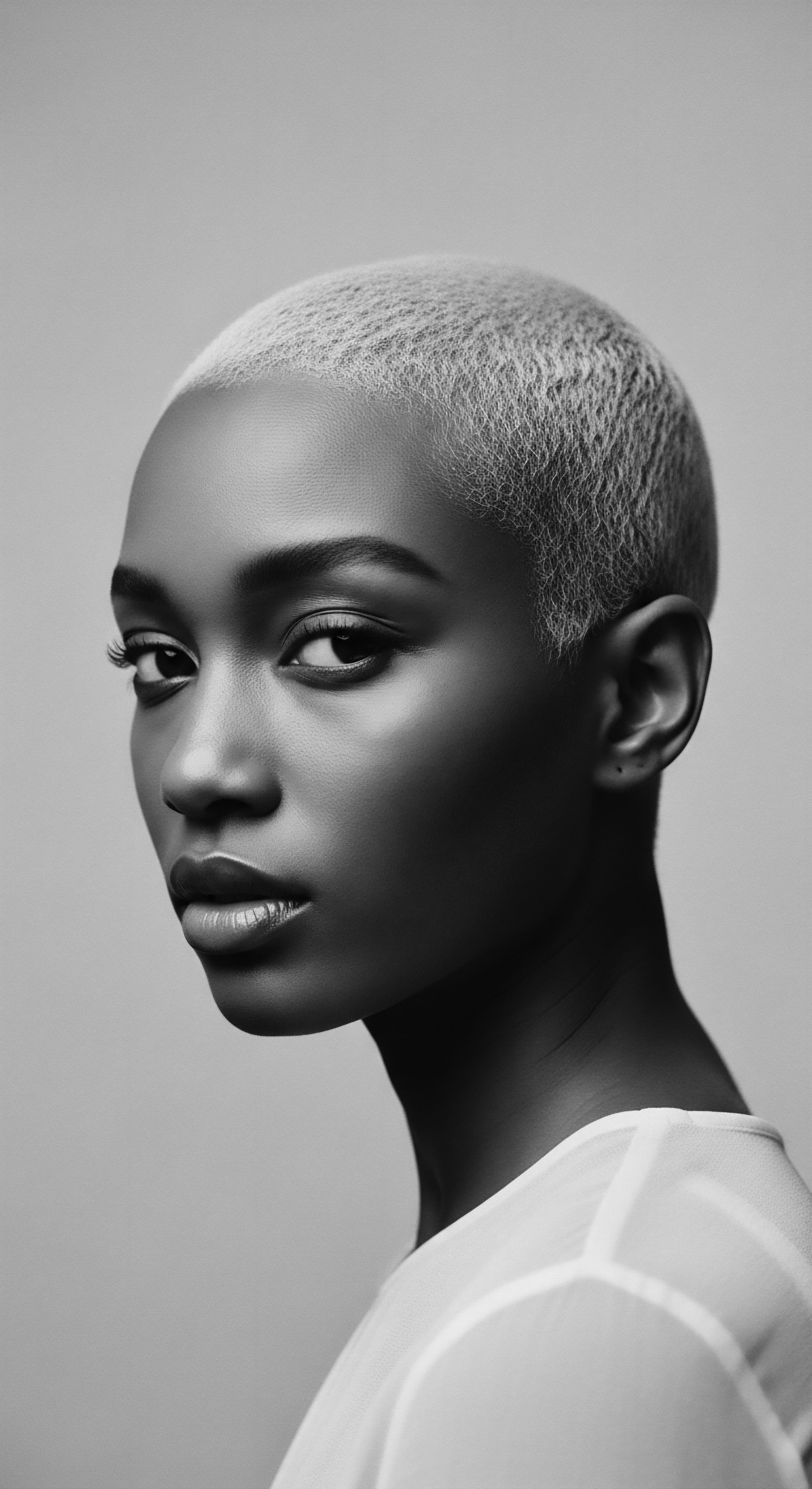
Fundamentals
The concept of Eurocentric Beauty, at its core, represents a set of aesthetic ideals historically rooted in European physical characteristics. This delineation of beauty has, over centuries, been propagated as a universal standard, often sidelining or diminishing the inherent allure of diverse human features, particularly those of African and Afro-diasporic descent. Its meaning extends beyond mere physical traits; it encompasses a complex system of cultural values, social hierarchies, and economic forces that have shaped perceptions of attractiveness globally. This statement, a fundamental explanation, recognizes the pervasive reach of such a standard.
For those embarking on a deeper understanding of hair’s ancestral narratives, recognizing Eurocentric Beauty’s influence becomes a primary step. It is not simply about fair skin or light eyes; its interpretation deeply impacts hair, especially textured hair. The emphasis within this framework often falls upon hair that is straight, fine, and light in color, characteristics traditionally prevalent in European populations.
This designation of what is deemed beautiful has historically led to the marginalization and misrepresentation of the rich spectrum of coils, kinks, and waves that define textured hair heritage. The Eurocentric standard’s specification of beauty thus created a distinct separation from the natural hair forms of many communities.
Eurocentric Beauty establishes an aesthetic framework that historically prioritizes European physical attributes, significantly influencing global perceptions of hair, especially textured hair.
Understanding this initial description helps to clarify how beauty ideals can become intertwined with power dynamics and cultural dominance. The historical dissemination of these standards, often through colonialism and media, meant that qualities deviating from the Eurocentric norm were frequently deemed less desirable or even unprofessional. This had tangible consequences for individuals with textured hair, who often faced pressure to conform, altering their natural hair through chemical treatments or heat styling to align with these imposed aesthetic values. The legacy of these practices continues to resonate within contemporary discussions of hair identity and self-acceptance, forming a crucial part of our collective understanding of hair’s past.
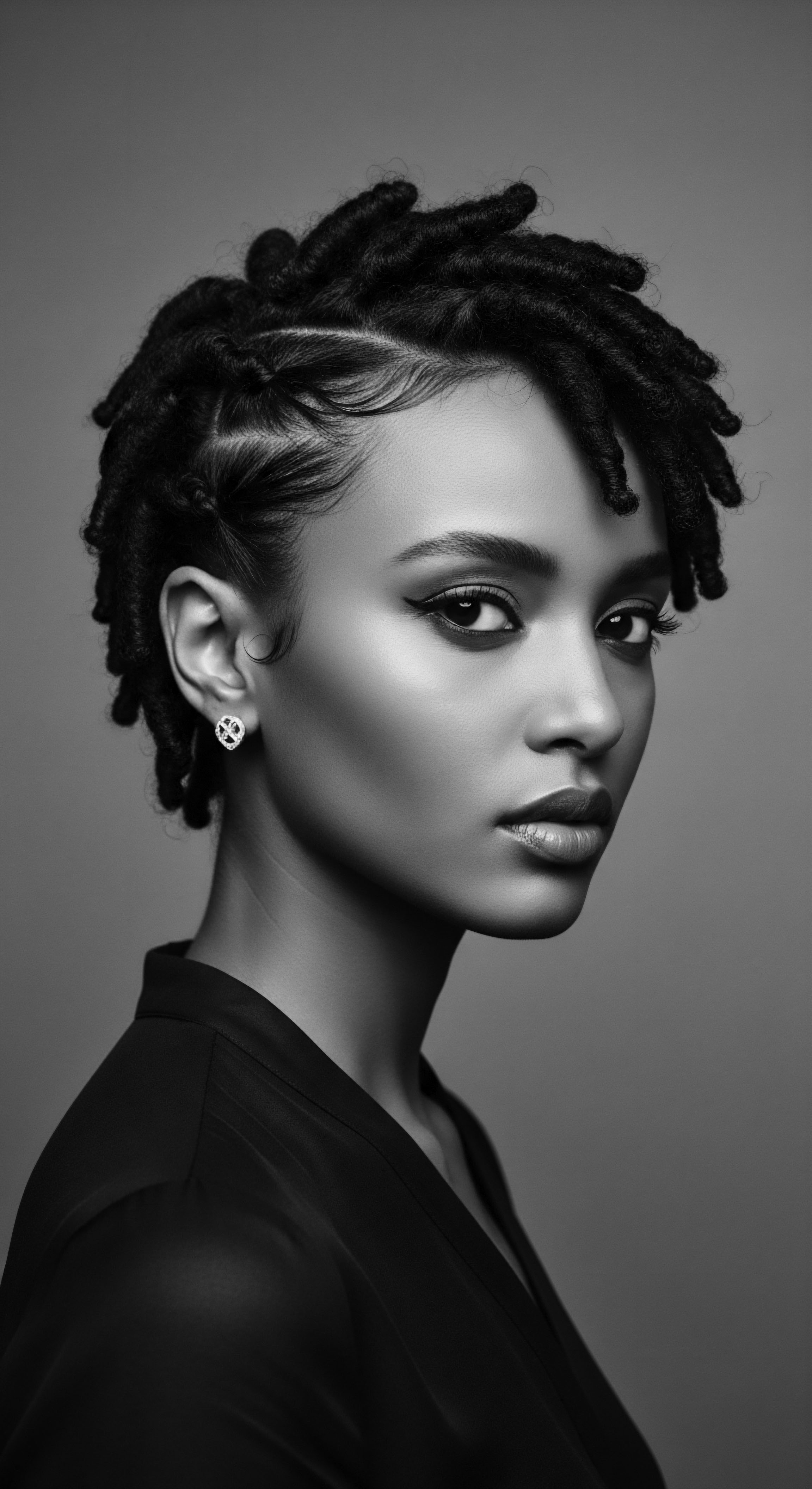
Historical Glimmers ❉ Early Impositions
The earliest echoes of Eurocentric Beauty’s imposition on textured hair can be traced to periods of transatlantic exchange and colonial expansion. As European powers extended their reach, their aesthetic preferences, often implicitly and explicitly, accompanied them. Hair, a highly visible marker of identity and lineage, became a particular site of influence.
Traditional African hairstyles, often elaborate and deeply symbolic, were frequently dismissed as uncivilized or unkempt when viewed through this new, narrow lens. This historical perspective helps us to grasp the profound impact of these initial encounters.
The introduction of tools and techniques aimed at altering hair texture to mimic European straightness became a tangible manifestation of this beauty ideal. From rudimentary hot combs to early chemical relaxers, these innovations, while sometimes offering perceived social mobility, simultaneously severed connections to ancestral hair practices. The initial clarification of Eurocentric Beauty’s meaning thus begins with acknowledging these historical impositions, recognizing how they began to shape the very definition of what was considered ‘good’ or ‘acceptable’ hair.
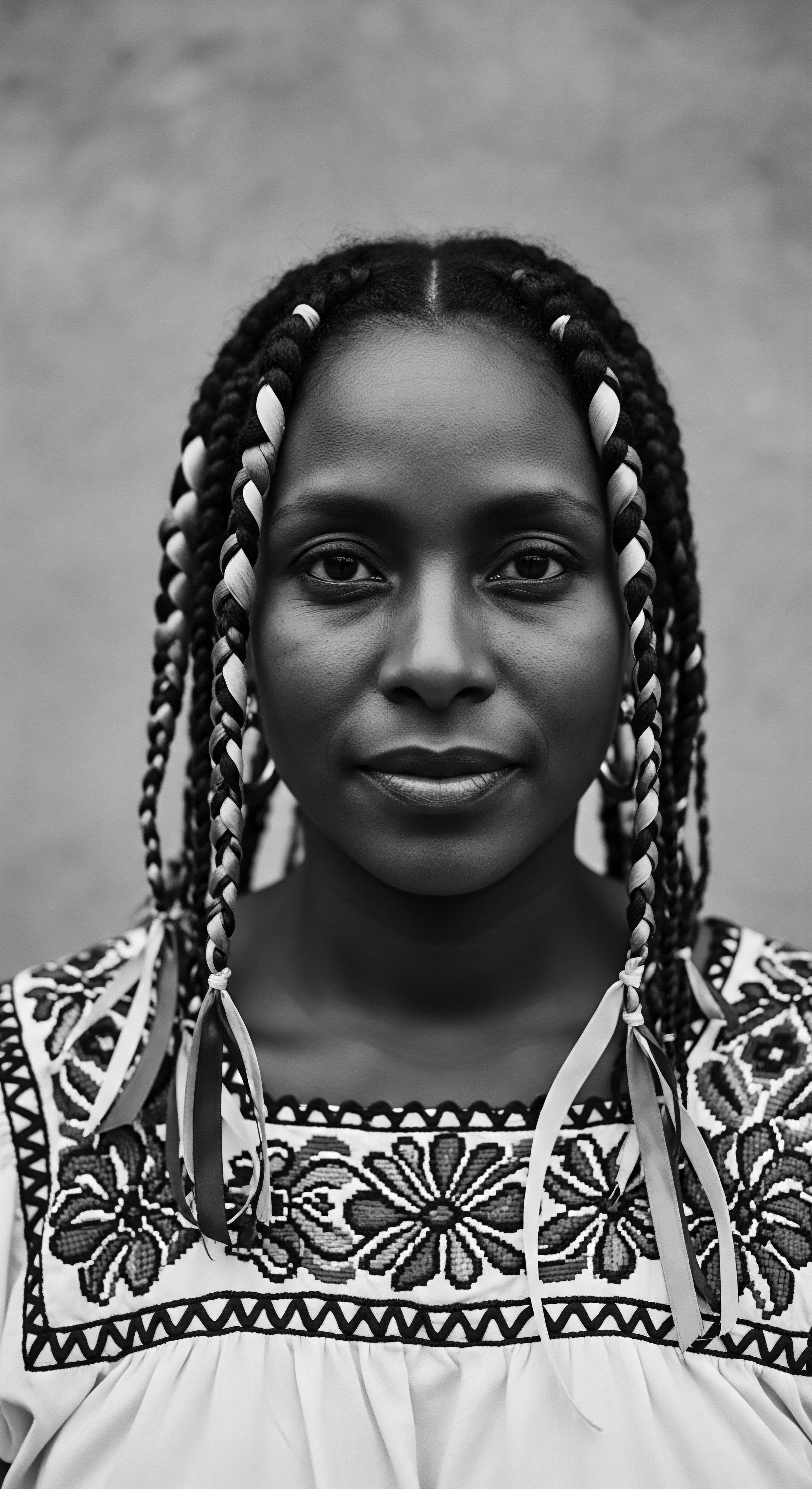
Intermediate
Moving beyond the foundational understanding, the intermediate meaning of Eurocentric Beauty reveals itself as a deeply ingrained cultural construct, far more complex than a mere preference for certain physical traits. Its significance lies in its pervasive ability to shape societal norms, individual self-perception, and economic landscapes, particularly concerning textured hair. This deeper interpretation acknowledges that Eurocentric Beauty is not a static ideal; rather, it has evolved, adapting its methods of influence while maintaining its core tenets. The ongoing impact of this delineation is a testament to its enduring power.
Within the rich heritage of textured hair, the imposition of Eurocentric Beauty standards has created a continuous tension. For generations, individuals with coily, kinky, and wavy hair have navigated a world where their natural crowning glory was often seen as an anomaly, requiring modification to gain acceptance in professional, social, and even educational settings. This pressure often translated into practices that, while sometimes offering perceived social advantages, also carried significant psychological and physical costs. The cultural import of this dynamic cannot be overstated, as it speaks to resilience and adaptation.
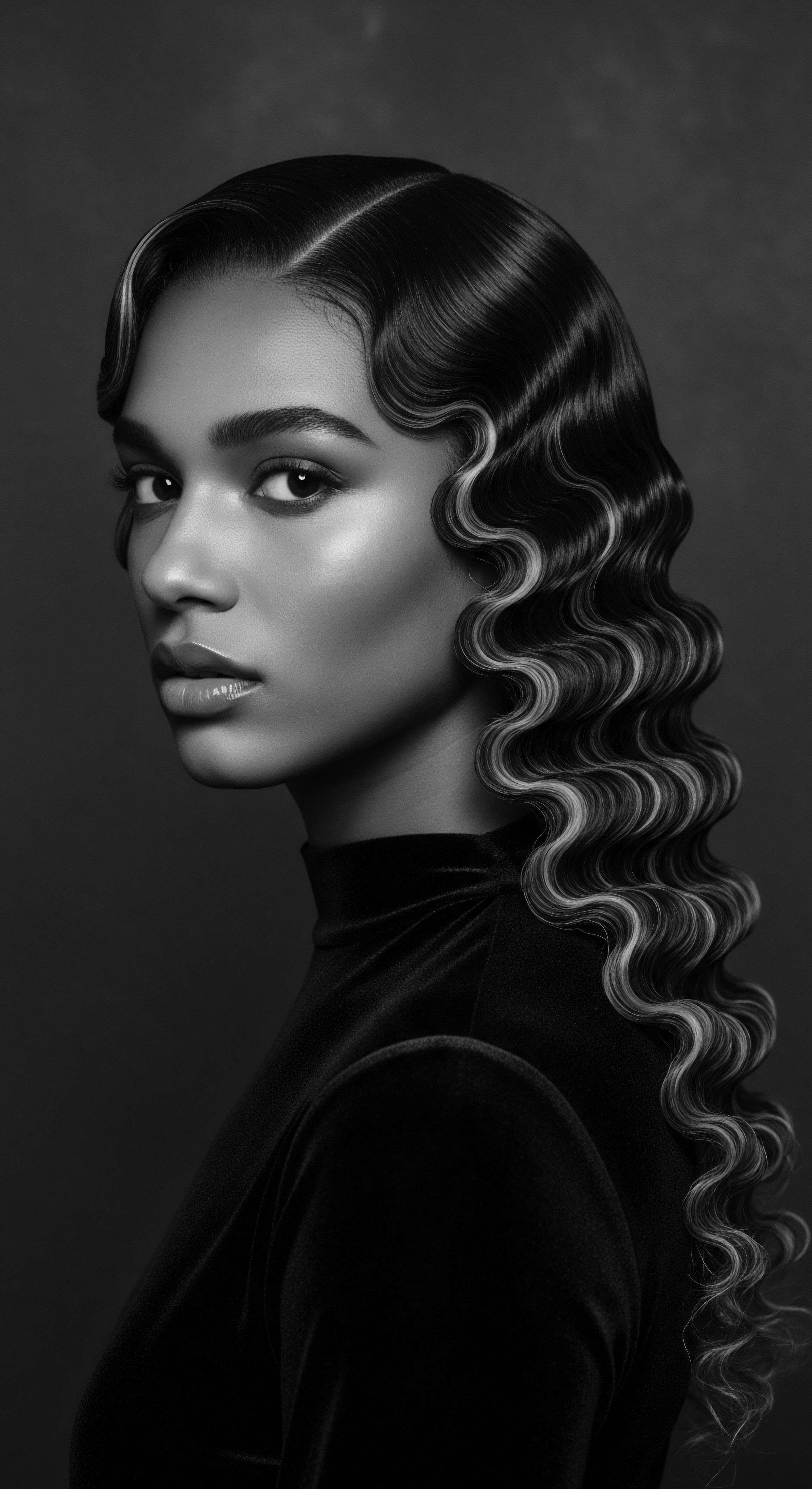
The Tender Thread ❉ Conformity and Resilience
The journey through this landscape often involved a delicate balance between conformity and the preservation of identity. The mid-20th century, for instance, witnessed a surge in the popularity of chemical relaxers, a direct response to the pervasive influence of Eurocentric ideals. These products, while offering the promise of straight hair, simultaneously introduced a cycle of chemical dependency and, often, damage to the hair and scalp. The widespread adoption of these methods underscores the societal pressures faced by Black women and men to align with a beauty standard that was fundamentally alien to their natural hair texture.
The intermediate understanding of Eurocentric Beauty unveils its dynamic influence on textured hair, manifesting as a historical tension between societal pressure to conform and the enduring spirit of heritage.
Yet, within this narrative of conformity, threads of resilience and ancestral wisdom persisted. Grandmothers and aunties continued to pass down traditional hair care rituals, often utilizing natural ingredients and gentle techniques that honored the hair’s inherent structure. These practices, though sometimes overshadowed by commercial products, represented a quiet rebellion, a continuous link to a heritage that celebrated hair in its natural state. The meaning of Eurocentric Beauty, therefore, cannot be fully grasped without acknowledging the counter-narratives of cultural preservation and the enduring spirit of self-acceptance that emerged in response.

Societal Echoes ❉ Professional and Social Spheres
The influence of Eurocentric Beauty extends deeply into professional and social spheres, dictating unspoken rules about ‘appropriate’ appearance. For individuals with textured hair, this often meant a direct correlation between hair texture and perceived professionalism or social standing. Consider the common experience of Black women being told their natural hairstyles were ‘unprofessional’ in corporate settings, a direct reflection of Eurocentric aesthetic biases. This particular incidence highlights the practical implications of such a pervasive standard.
This subtle yet powerful societal pressure often forced individuals to make difficult choices between authenticity and opportunity. The implication of this beauty standard is that one’s natural self might not be sufficient, leading to a constant negotiation of identity. The struggle for hair freedom, therefore, becomes not just a personal one, but a collective fight against a system that has historically devalued diverse forms of beauty. The continued push for CROWN Act legislation in various regions across the globe speaks directly to this ongoing battle for the right to wear one’s hair in its natural, ancestral glory without fear of discrimination.
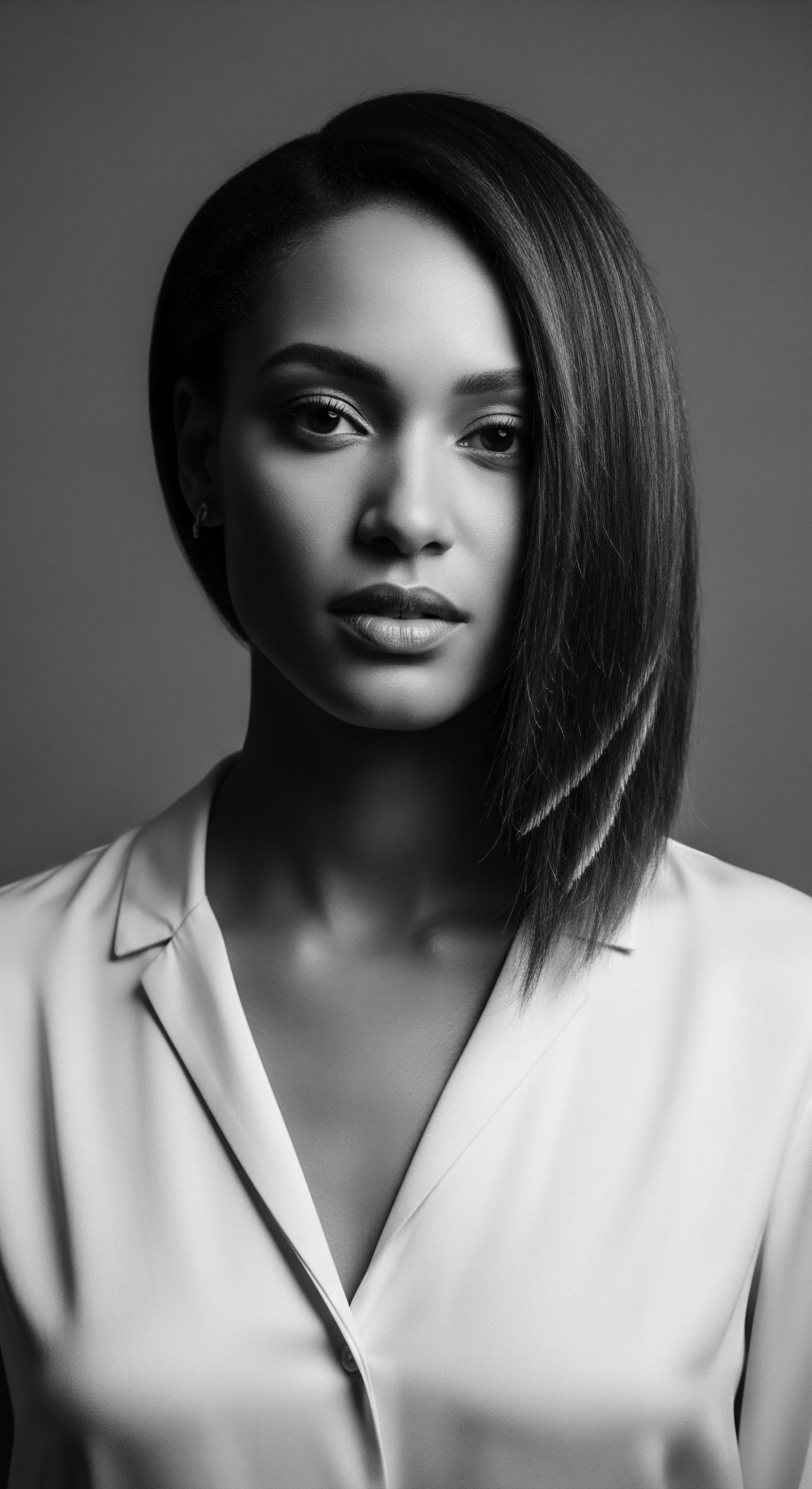
Academic
The academic definition and meaning of Eurocentric Beauty transcend superficial aesthetic preferences, positioning it as a deeply entrenched socio-cultural construct, a powerful ideological apparatus, and a mechanism of social control, particularly when examined through the lens of textured hair heritage. Its conceptual delineation reveals a historical continuum wherein a specific aesthetic paradigm, originating from European phenotypic traits, was systematically normalized and valorized as universally superior, often at the direct expense of non-European physiognomies. This constitutes a complex system of power, privilege, and marginalization, shaping both individual identity and collective experience. The profound implications of this pervasive ideology demand rigorous scholarly examination, revealing its intricate layers and far-reaching consequences across various human dimensions.
From an academic vantage point, Eurocentric Beauty operates not merely as a set of visual preferences, but as a hegemonic discourse, deeply interwoven with colonial legacies, racial hierarchies, and economic exploitation. Its impact on textured hair is especially pronounced, as it has historically pathologized natural hair textures—coils, kinks, and waves—relegating them to categories of ‘unruly,’ ‘unprofessional,’ or ‘unattractive.’ This intellectual interpretation recognizes that such designations are not arbitrary; they are the product of specific historical forces and power dynamics designed to uphold a particular social order. The very substance of beauty, within this framework, becomes a tool for social stratification.
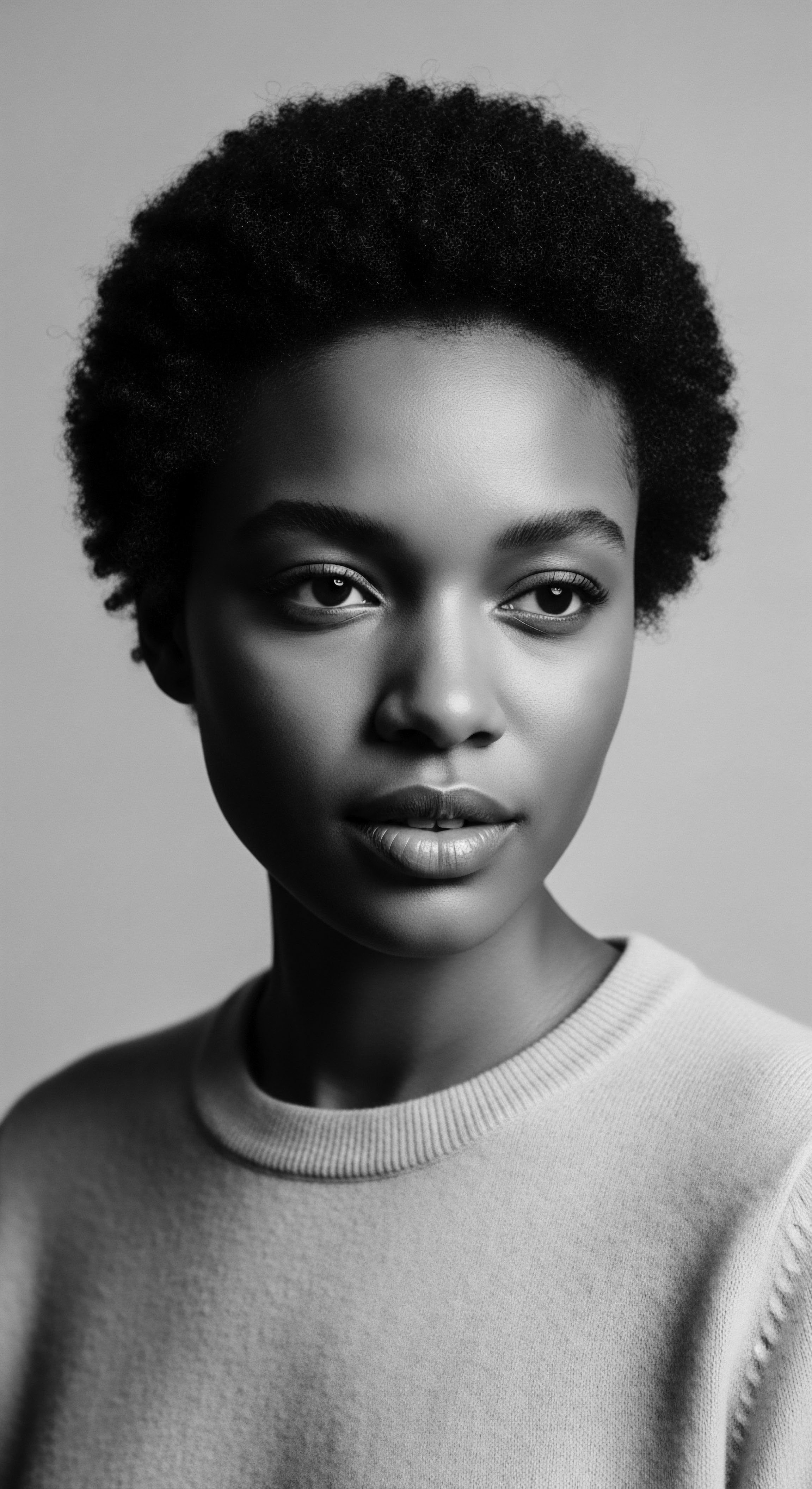
Echoes from the Source ❉ Biological Misinterpretations and Ancestral Practices
The foundational misunderstanding of textured hair’s elemental biology forms a critical academic point in analyzing Eurocentric Beauty. Historically, the unique helical structure and follicular characteristics of textured hair were often misinterpreted or deliberately misrepresented as inferior to straight hair. This biological misinterpretation, often cloaked in pseudoscientific rhetoric, served to justify the aesthetic hierarchy.
In contrast, ancestral practices across various African civilizations understood hair not merely as an appendage but as a conduit of spiritual energy, a marker of social status, and a repository of familial and communal history. The significance of hair in these cultures extended far beyond mere appearance.
Consider the intricate braiding traditions of the Fulani people of West Africa, or the symbolic hairstyles of the Maasai, where hair was meticulously styled to convey age, marital status, and tribal affiliation (Byrd & Tharps, 2001). These practices were deeply embedded in a holistic worldview where beauty was inseparable from wellness, community, and spiritual connection. The Eurocentric gaze, however, flattened this rich complexity, reducing diverse hair forms to a single, often negative, archetype. The academic explication of Eurocentric Beauty thus necessitates a critical deconstruction of these historical misinterpretations, revealing how scientific discourse was often co-opted to serve ideological ends.
Academically, Eurocentric Beauty functions as a hegemonic discourse, historically pathologizing textured hair through biological misinterpretations and overshadowing rich ancestral hair traditions.
The academic lens also allows for a nuanced examination of the psychological impact of this pervasive standard. Research indicates a clear correlation between adherence to Eurocentric beauty ideals and diminished self-esteem, increased body dissatisfaction, and even psychological distress among individuals from marginalized groups, particularly Black women (Bond & Cash, 1992). The long-term consequences of such internalization can manifest as chronic self-surveillance, a detachment from one’s authentic self, and a perpetuation of intergenerational trauma related to appearance. This analytical focus on human experience reveals the deep psychological imprint of these beauty norms.
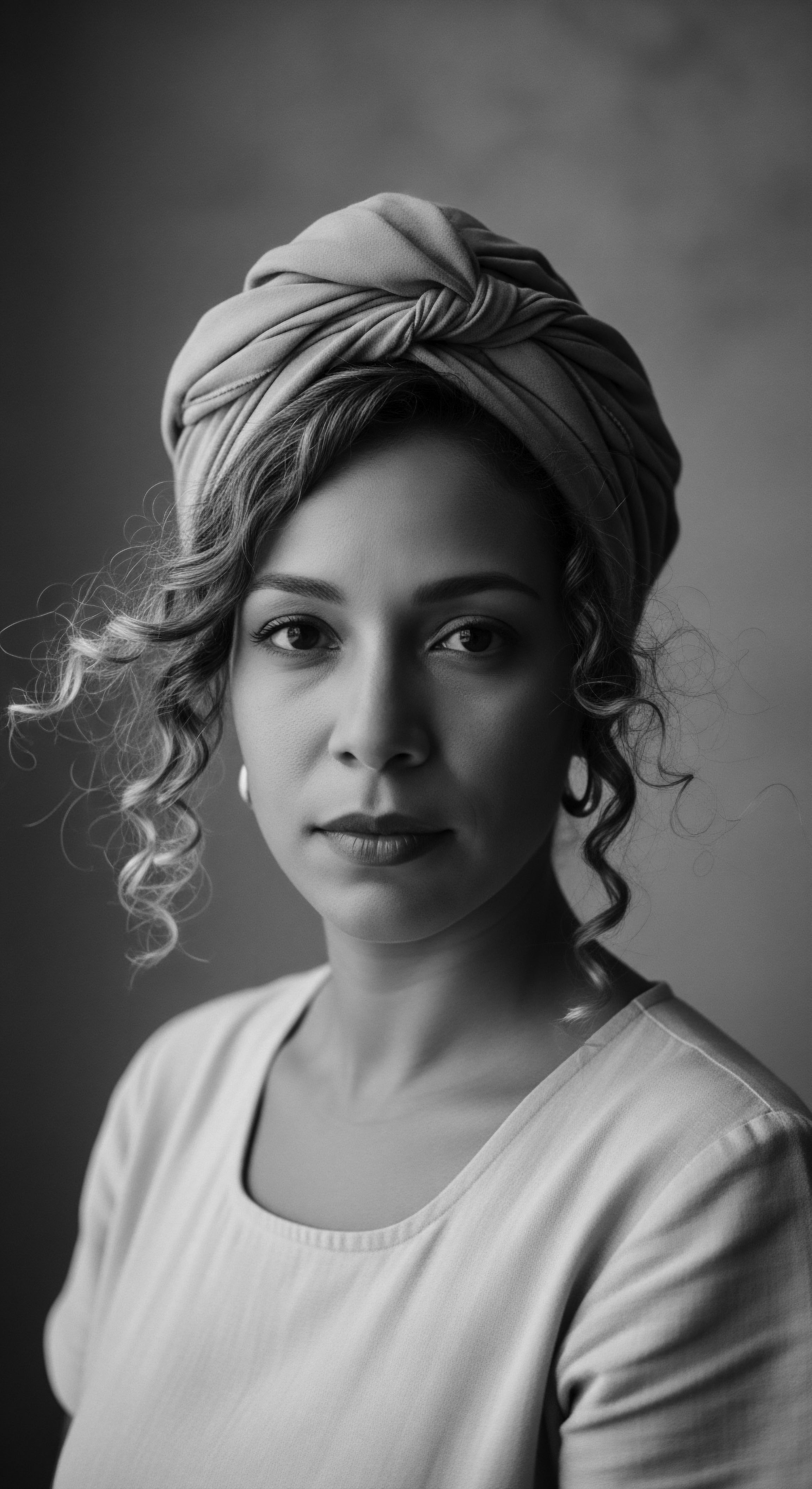
The Unbound Helix ❉ Resistance, Reclamation, and the Psychological Imperative
The contemporary landscape, however, is witnessing a powerful movement of resistance and reclamation, a testament to the enduring human spirit and the intrinsic value of ancestral wisdom. This intellectual re-evaluation of Eurocentric Beauty is not merely about rejecting an external standard; it is about actively reconstructing internal frameworks of beauty, self-worth, and cultural identity. The natural hair movement, a global phenomenon, serves as a compelling case study in this academic inquiry.
It represents a collective decision to sever ties with oppressive beauty norms and to celebrate the inherent beauty of textured hair in all its diverse forms. The movement’s denotation is a powerful act of defiance and affirmation.
The psychological imperative for this reclamation is profound. For individuals who have spent years chemically altering their hair, the decision to ‘go natural’ is often described as a deeply transformative experience, a journey of self-discovery and healing. It involves confronting internalized biases, dismantling long-held beliefs about beauty, and forging a renewed connection with one’s ancestral lineage.
This process of re-connection is often supported by communal practices, online communities, and the sharing of traditional hair care knowledge, echoing the collective wisdom of past generations. The substance of this movement is a testament to cultural fortitude.
A specific historical example powerfully illuminates this connection ❉ the Black is Beautiful movement of the 1960s and 70s. This cultural phenomenon, deeply intertwined with the Civil Rights Movement, explicitly challenged Eurocentric beauty standards by celebrating Black physical features, including natural hair. The Afro, in particular, became a potent symbol of defiance, pride, and political consciousness.
Its widespread adoption was not merely a fashion statement; it was a deliberate act of rejecting the societal pressure to conform and an assertion of inherent Black beauty. This historical period offers a compelling case study of collective identity formation in direct opposition to dominant aesthetic norms.
This academic exploration also acknowledges the intersectionality of identity, recognizing that the impact of Eurocentric Beauty varies based on race, gender, class, and geographic location. For mixed-race individuals, for example, navigating hair identity can be particularly complex, as they often embody a confluence of hair textures and ancestral legacies. The challenge for these individuals frequently involves reconciling diverse heritage strands within a societal framework that often demands categorization. The academic investigation of Eurocentric Beauty thus demands a nuanced understanding of these diverse experiences and the continuous process of meaning-making within them.
The enduring legacy of Eurocentric Beauty also presents an opportunity for critical pedagogy and the development of culturally affirming practices. Educational initiatives that teach the science of textured hair, celebrate its historical significance, and promote holistic care methods are crucial for dismantling internalized biases and fostering a more inclusive understanding of beauty. The delineation of these educational pathways is vital for future generations.
Ultimately, the academic meaning of Eurocentric Beauty is a dynamic and evolving construct. It calls for continuous critical analysis, recognizing its historical roots, its ongoing manifestations, and the powerful movements of resistance and reclamation that seek to redefine beauty on terms that honor the full spectrum of human diversity, particularly the rich and varied heritage of textured hair. This deep investigation provides a comprehensive framework for understanding its past, present, and future implications.
| Ancestral Hair Care Practices Oiling and Scalp Massage ❉ Utilized natural oils (e.g. shea butter, coconut oil) for moisture retention and scalp health, promoting growth and vitality. |
| Impact of Eurocentric Beauty Standards Chemical Straightening ❉ Introduction of harsh lye-based relaxers to achieve straight textures, often leading to scalp burns, hair breakage, and long-term damage. |
| Ancestral Hair Care Practices Intricate Braiding & Coiling ❉ Protective styles that managed hair, showcased artistry, and communicated social status, often using natural fibers. |
| Impact of Eurocentric Beauty Standards Hot Combing & Flat Ironing ❉ Use of extreme heat to temporarily straighten hair, causing heat damage, dryness, and altering natural curl patterns over time. |
| Ancestral Hair Care Practices Herbal Rinses & Cleansers ❉ Employed plant-based ingredients for gentle cleansing, conditioning, and medicinal properties, respecting hair's natural state. |
| Impact of Eurocentric Beauty Standards Sulphate-Rich Shampoos ❉ Over-stripping cleansers designed for finer, straighter hair, leading to dryness and frizz in textured hair, necessitating more product use. |
| Ancestral Hair Care Practices Communal Grooming Rituals ❉ Hair care as a shared, intergenerational activity, fostering bonds and transmitting cultural knowledge. |
| Impact of Eurocentric Beauty Standards Individualized, 'Problem-Solving' Products ❉ Marketing that framed textured hair as inherently 'difficult' or 'unmanageable,' promoting isolation in hair care. |
| Ancestral Hair Care Practices The persistent contrast between ancestral practices, which celebrated the inherent qualities of textured hair, and the pressures exerted by Eurocentric beauty ideals reveals a historical struggle for hair autonomy and cultural preservation. |
The intellectual pursuit of understanding Eurocentric Beauty’s impact extends to its role in the global beauty industry. This industry, valued at billions, has historically profited immensely from the insecurity generated by these standards. Products designed to alter, lighten, or straighten hair that naturally deviates from the Eurocentric norm have dominated markets, often at the expense of products that nourish and celebrate natural textures. The economic implication of this dynamic is substantial, revealing how deeply embedded these ideals are within commercial systems.
Moreover, the academic discussion must acknowledge the resilience inherent in communities that have historically been subjected to these pressures. The consistent creation of new hairstyles, the development of natural hair care routines, and the flourishing of Black-owned beauty businesses are all powerful acts of resistance and self-determination. These acts are not merely reactive; they represent a proactive assertion of cultural identity and a profound redefinition of beauty on terms that honor ancestral legacies. The long-term success of these efforts provides a compelling counter-narrative to historical oppression.
The meaning of Eurocentric Beauty, from an academic perspective, is thus a multi-layered phenomenon, requiring interdisciplinary analysis that draws from sociology, anthropology, psychology, history, and critical race theory. It is a concept that has shaped individual lives and collective histories, and its ongoing deconstruction is essential for fostering a more equitable and inclusive future for all forms of beauty, especially the rich and diverse heritage of textured hair. This comprehensive examination is critical for a full comprehension.
- Cultural Erasure ❉ Eurocentric ideals often contributed to the suppression of traditional hair practices and the loss of associated cultural knowledge.
- Economic Exploitation ❉ The beauty industry capitalized on insecurities, promoting products that altered natural textures rather than celebrating them.
- Psychological Impact ❉ Internalization of these standards led to self-esteem issues and body dissatisfaction among marginalized groups.
- Societal Discrimination ❉ Natural textured hair was frequently deemed ‘unprofessional’ or ‘unacceptable’ in various public and private spheres.
This complex interplay of historical forces and contemporary realities forms the bedrock of an academic understanding of Eurocentric Beauty. It compels us to look beyond the surface, to question the origins of our aesthetic preferences, and to celebrate the myriad forms of beauty that have long been overlooked or undervalued. The continuous re-evaluation of these standards is a vital component of cultural evolution and social justice.
- Deconstructing Visual Norms ❉ Analyzing how media, art, and fashion historically disseminated and reinforced specific European features as the epitome of beauty.
- Tracing Economic Pathways ❉ Examining the financial structures that supported the proliferation of products and services designed to alter non-Eurocentric hair textures.
- Investigating Psychological Effects ❉ Studying the internalized impacts of these beauty standards on self-perception, mental well-being, and identity formation across diverse populations.
- Documenting Resistance Movements ❉ Chronicling historical and contemporary efforts by Black and mixed-race communities to challenge, redefine, and reclaim beauty standards, especially concerning hair.
These areas of inquiry collectively contribute to a robust academic understanding, offering insights into how Eurocentric Beauty has functioned as a cultural force and how its legacy continues to be navigated and challenged within the vibrant landscape of textured hair heritage. The scholarly pursuit of this topic provides invaluable context for understanding contemporary beauty movements.
Byrd, A. D. & Tharps, L. D.
(2001). Hair Story ❉ Untangling the Roots of Black Hair in America. St. Martin’s Press.
Bond, S. M. & Cash, T. F.
(1992). Black women’s body images ❉ An empirical analysis. Journal of Applied Social Psychology, 22 (20), 1580-1595.
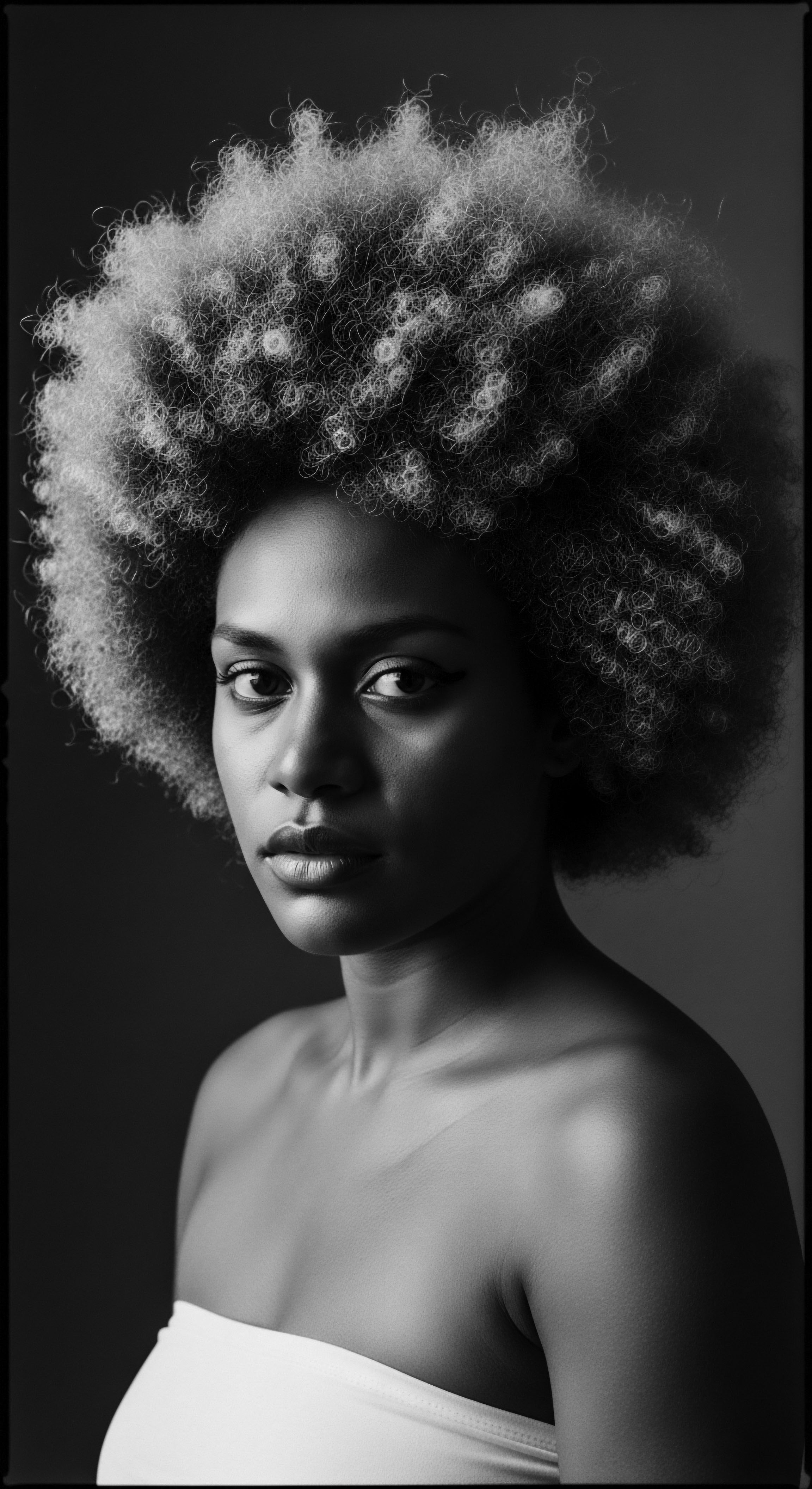
Reflection on the Heritage of Eurocentric Beauty
As we close this exploration, the enduring heritage of Eurocentric Beauty reveals itself not as a static historical artifact, but as a living current that continues to shape and be shaped by the world, particularly within the vibrant tapestry of textured hair and its communities. The journey from the quiet hearths of ancestral care to the global stages of identity assertion is a profound meditation on resilience, adaptation, and the ceaseless human spirit. The Soul of a Strand ethos calls us to remember that each coil, each wave, each strand carries the whispers of generations, a rich repository of knowledge, struggle, and triumph.
The shadows cast by Eurocentric ideals have, paradoxically, often served to illuminate the extraordinary fortitude and creativity within Black and mixed-race hair traditions. From the meticulous crafting of protective styles that safeguarded hair from environmental aggressors, long before modern science understood the nuances of hair porosity, to the ingenious use of indigenous botanicals for cleansing and conditioning, ancestral wisdom offers a profound counter-narrative. These practices were not merely about aesthetics; they were holistic rituals, deeply connected to well-being, community, and a sacred understanding of self. The reflection on this heritage underscores the deep wisdom embedded in these practices.
The contemporary landscape, with its burgeoning natural hair movement and increasing legislative protections for hair freedom, signals a powerful shift. It is a collective turning inward, a re-connection to the intrinsic beauty that was always present, waiting to be celebrated without external validation. This movement is a testament to the fact that while standards may be imposed, the spirit of heritage, like a deeply rooted tree, always finds a way to blossom, to stretch towards the light, and to bear fruit in its own unique form. The unbound helix of identity continues its powerful spiral, weaving new stories while honoring the ancient ones.
The journey of understanding Eurocentric Beauty is, ultimately, a journey of self-discovery and collective liberation. It compels us to question, to deconstruct, and most importantly, to celebrate the magnificent diversity of human hair in all its natural glory. It reminds us that true beauty springs from authenticity, from a deep reverence for one’s own heritage, and from the freedom to express one’s identity without compromise. This ongoing reflection strengthens our connection to the rich lineage of hair.
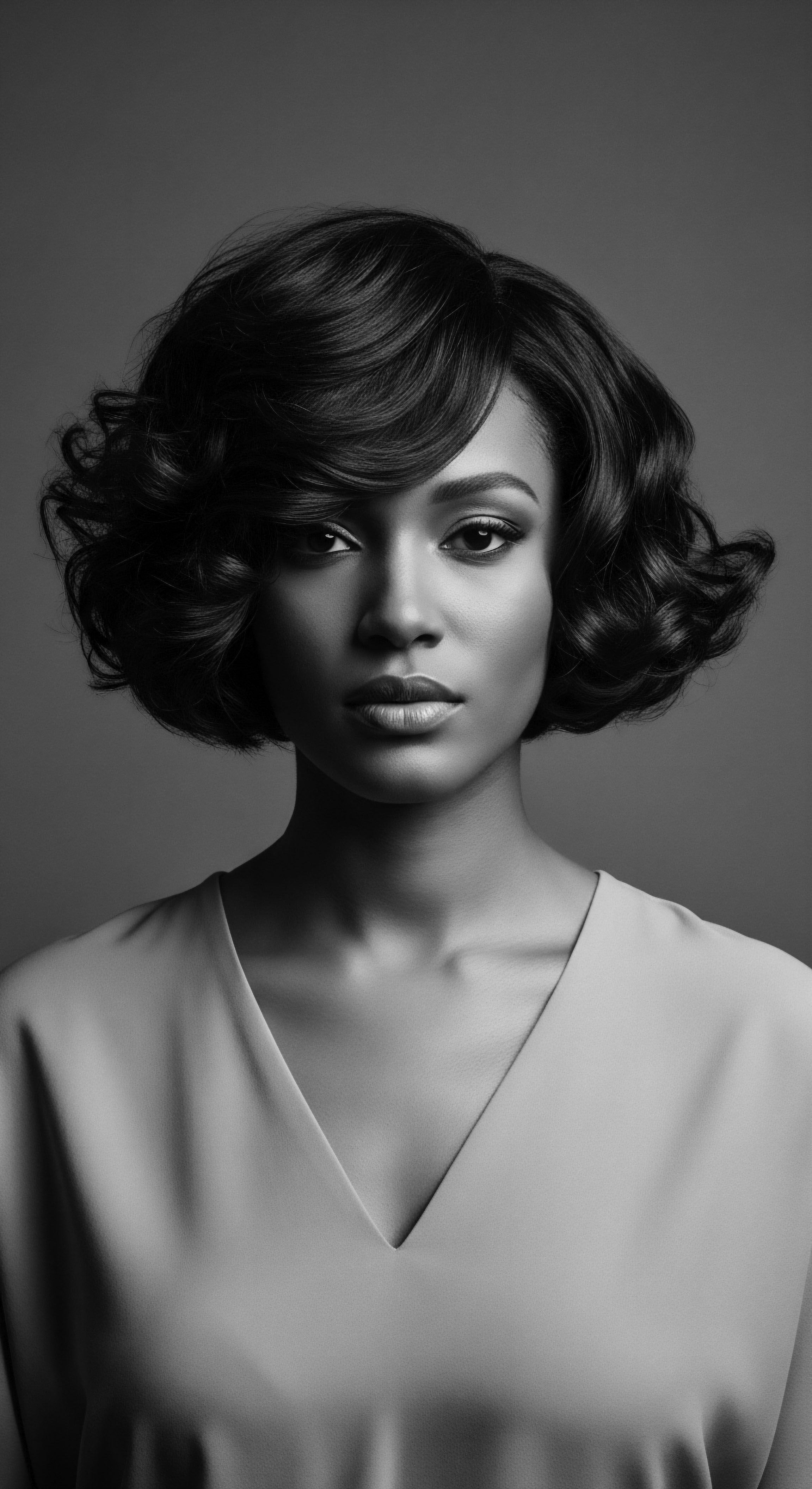
References
- Byrd, A. D. & Tharps, L. D. (2001). Hair Story ❉ Untangling the Roots of Black Hair in America. St. Martin’s Press.
- Patton, T. O. (2006). Pushing the boundaries ❉ African American women, popular culture, and beauty standards. Peter Lang.
- Banks, I. (2000). Hair matters ❉ Beauty, power, and Black women’s consciousness. New York University Press.
- Mercer, K. (1994). Welcome to the Jungle ❉ New Positions in Black Cultural Studies. Routledge.
- Rooks, N. M. (1996). Hair raising ❉ Beauty, culture, and African American women. Rutgers University Press.
- Weitz, R. (2004). Rapunzel’s daughters ❉ What women’s hair tells us about women’s lives. Farrar, Straus and Giroux.
- Tate, S. (2007). Black beauty ❉ Aesthetics, culture, and identity. Ashgate Publishing, Ltd.
- Akbar, N. (1996). Light from Ancient Africa. New Mind Productions.
- Walker, L. (2007). The history of black hair ❉ From the first African hairstyles to the present day. Abrams.
- Hooks, b. (1992). Black Looks ❉ Race and Representation. South End Press.
